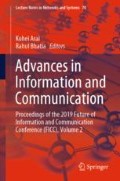Abstract
For training unsupervised probabilistic machine learning models, matrix computation and sample generation are the two key steps. While GPUs excel at matrix computation, they use pseudo-random numbers to generate samples. Contrarily, Adiabatic Quantum Processors (AQP) use quantum mechanical systems to generate samples accurately and quickly, but are not suited for matrix computation. We present a Classical-Quantum Hybrid Approach for training unsupervised probabilistic machine learning models, leveraging GPUs for matrix computations and the D-Wave quantum sampling library for sample generation. We compare this approach to classical and quantum approaches across four performance metrics. Our results indicate that while the hybrid approach–which uses one AQP and one GPU–outperforms quantum and one of the classical approaches, it performs comparably to the GPU approach, and is outperformed by the CPU approach, which uses 56 high-end CPUs. Lastly, we compare sampling on AQP versus sampling library and show that AQP performs better.
Access this chapter
Tax calculation will be finalised at checkout
Purchases are for personal use only
References
LeCun, Y., Bengio, Y., Hinton, G.: Deep learning. nature 521(7553), 436 (2015)
Iandola, F.N., Moskewicz, M.W., Ashraf, K., Keutzer, K.: Firecaffe: near-linear acceleration of deep neural network training on compute clusters. In: Proceedings of the IEEE Conference on Computer Vision and Pattern Recognition, pp. 2592–2600 (2016)
Young, S.R., Rose, D.C., Karnowski, T.P., Lim, S.-H., Patton, R.M.: Optimizing deep learning hyper-parameters through an evolutionary algorithm. In: Proceedings of the Workshop on Machine Learning in High-Performance Computing Environments, p. 4, ACM (2015)
Kish, L.B.: End of moore’s law: thermal (noise) death of integration in micro and nano electronics. Phys. Lett. A 305(3–4), 144–149 (2002)
Potok, T.E., Schuman, C.D., Young, S.R., Patton, R.M., Spedalieri, F., Liu, J., Yao, K.-T., Rose, G., Chakma, G.: A study of complex deep learning networks on high performance, neuromorphic, and quantum computers. In: Machine Learning in HPC Environments (MLHPC), Workshop on, pp. 47–55, IEEE (2016)
Amin, M.H., Andriyash, E., Rolfe, J., Kulchytskyy, B., Melko, R.: Quantum boltzmann machine arXiv preprint arXiv:1601.02036 (2016)
Gruska, J.: Quantum computing, vol. 2005. McGraw-Hill London (1999)
Rabitz, H., de Vivie-Riedle, R., Motzkus, M., Kompa, K.: Whither the future of controlling quantum phenomena? Science 288(5467), 824–828 (2000)
Salakhutdinov, R., Mnih, A., Hinton, G.: Restricted boltzmann machines for collaborative filtering. In: Proceedings of the 24th international conference on Machine learning, pp. 791–798 ACM (2007)
Sarikaya, R., Hinton, G.E., Deoras, A.: Application of deep belief networks for natural language understanding. IEEE/ACM Trans. Audio, Speech, and Lang. Process. 22(4), 778–784 (2014)
Watrous, J.: Quantum computational complexity. In: Encyclopedia of Complexity and Systems Science, pp. 7174–7201. Springer (2009)
Frisch, A.: Ibm qintroduction into quantum computing with live demo. In: System-on-Chip Conference (SOCC), 2017 30th IEEE International, pp. 1–2, IEEE (2017)
2018 CES: Intel advances quantum and neuromorphic computing research’ 2018. https://newsroom.intel.com/news/intel-advances-quantum-neuromorphic-computing-research/
Terhal, B.M.: Quantum supremacy, here we come. Nat. Phys. p. 1 (2018)
Johnson, M.W., Amin, M.H., Gildert, S., Lanting, T., Hamze, F., Dickson, N., Harris, R., Berkley, A.J., Johansson, J., Bunyk, P., et al.: Quantum annealing with manufactured spins. Nature 473(7346), 194 (2011)
Denchev, V.S., Boixo, S., Isakov, S.V., Ding, N., Babbush, R., Smelyanskiy, V., Martinis, J., Neven, H.: What is the computational value of finite-range tunneling? Phys. Rev. X 6(3), 031015 (2016)
Biamonte, J., Wittek, P., Pancotti, N., Rebentrost, P., Wiebe, N., Lloyd, S.: Quantum machine learning. Nature 549(7671), 195 (2017)
DeBenedictis, E.P.: A future with quantum machine learning. Computer 51(2), 68–71 (2018)
Smolensky, P.: Information processing in dynamical systems: foundations of harmony theory. COLORADO UNIV AT BOULDER DEPT OF COMPUTER SCIENCE, Tech. Rep. (1986)
Hinton, G.E.: Training products of experts by minimizing contrastive divergence. Neural Comput. 14(8), 1771–1800 (2002)
Fiore, U., Palmieri, F., Castiglione, A., De Santis, A.: Network anomaly detection with the restricted boltzmann machine. Neuro Comput. 122, 13–23 (2013)
Jaitly, N., Hinton, G.: Learning a better representation of speech soundwaves using restricted boltzmann machines. In: 2011 IEEE International Conference on Acoustics, Speech and Signal Processing (ICASSP), pp. 5884–5887, IEEE (2011)
Le Roux, N., Bengio, Y.: Representational power of restricted boltzmann machines and deep belief networks. Neural Comput. 20(6), 1631–1649 (2008)
Hinton, G.E., Osindero, S., Teh, Y.-W.: A fast learning algorithm for deep belief nets. Neural Comput. 18(7), 1527–1554 (2006)
Lee, H., Grosse, R., Ranganath, R., Ng, A.Y.: Convolutional deep belief networks for scalable unsupervised learning of hierarchical representations. In: Proceedings of the 26th annual international conference on machine learning, pp. 609–616, ACM, 2009
Mohamed, A.-R., Yu, D., Deng, L.: Investigation of full-sequence training of deep belief networks for speech recognition. In: Eleventh Annual Conference of the International Speech Communication Association (2010)
Zhou, S., Chen, Q., Wang, X.: Fuzzy deep belief networks for semi-supervised sentiment classification. Neuro Comput. 131, 312–322 (2014)
Masci, J., Meier, U., Cireşan, D., Schmidhuber, J.: Stacked convolutional auto-encoders for hierarchical feature extraction. In: International Conference on Artificial Neural Networks, pp. 52–59. Springer (2011)
Oliphant, T.E.: A guide to NumPy, vol. 1. Trelgol Publishing USA (2006)
Abadi, M., Barham, P., Chen, J., Chen, Z., Davis, A., Dean, J., Devin, M., Ghemawat, S., Irving, G., Isard, M., et al.: Tensorflow: a system for large-scale machine learning. OSDI 16, 265–283 (2016)
D-Wave Systems Inc.: Training probabilistic models using d-wave sampling libraries (2018)
D-Wave Systems Inc.: Developer guide for python (2018)
Bierhorst, P., Knill, E., Glancy, S., Zhang, Y., Mink, A., Jordan, S., Rommal, A., Liu, Y.-K., Christensen, B., Nam, S.W., et al.: Experimentally generated randomness certified by the impossibility of superluminal signals. Nature 556(7700), 223 (2018)
Author information
Authors and Affiliations
Corresponding author
Editor information
Editors and Affiliations
Rights and permissions
Copyright information
© 2020 Springer Nature Switzerland AG
About this paper
Cite this paper
Date, P., Schuman, C., Patton, R., Potok, T. (2020). A Classical-Quantum Hybrid Approach for Unsupervised Probabilistic Machine Learning. In: Arai, K., Bhatia, R. (eds) Advances in Information and Communication. FICC 2019. Lecture Notes in Networks and Systems, vol 70. Springer, Cham. https://doi.org/10.1007/978-3-030-12385-7_9
Download citation
DOI: https://doi.org/10.1007/978-3-030-12385-7_9
Published:
Publisher Name: Springer, Cham
Print ISBN: 978-3-030-12384-0
Online ISBN: 978-3-030-12385-7
eBook Packages: Intelligent Technologies and RoboticsIntelligent Technologies and Robotics (R0)

